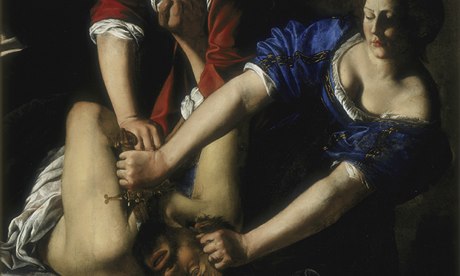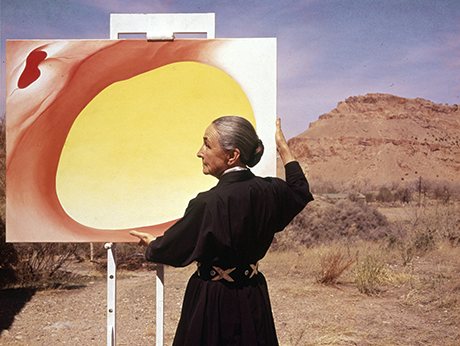From
the 17th-century painter who repeatedly depicted a woman beheading a
man to the last great surrealist, Louise Bourgeois, here are 10 artists
who took on the patriarchy and won


Go for the throat …
Judith and Holofernes (1612-21) by Artemisia Gentileschi. Click for full
image. Photograph: Alinari/Rex Features
Artemisia Gentileschi
When she was a teenager, this 17th-century baroque artist was raped by a painter. She responded by turning her art into a weapon. In Gentileschi's repeated paintings of the biblical story of Judith slaying Holofernes, the Israelite hero is helped by her muscular servant. As one woman holds down Holofernes on his bed, the other saws through his neck with a sword. Blood spurts everywhere in a sensational image of women taking revenge on patriarchy.Hannah Wilke
In her SOS Starification Object Series (1974-82), Wilke was photographed with blobs of chewing gum stuck on to her flesh. Dotting her face and bare body, these bizarre markings resembled a modern form of tribal scarification (this was before ritualistic body modification became fashionable) and resemble vaginas. Or are they eyes? Wilke's "starification" marked her with the burden of being objectified by the male gaze.Adrian Piper
In her Catalysis performances (1970), Piper turned herself into a human provocation in public places such as the New York subway. In one performance, she rode the subway after soaking her clothes in pungent substances for a week to make them stink. She muttered in the street, entered the elevator of the Empire State Building with a red towel stuffed in her mouth or simply made eye contact with strangers. Her purpose was to dramatise social unease and ultimately the unspoken tensions of race in America.Georgia O'Keeffe
In the early 20th century, Georgia O'Keeffe posed nude for her lover, the modernist photographer and art impressario Alfred Stieglitz, and painted abstractions that have an explicitly vaginal beauty. Compared with some artists in this list she may seem soft, but her cussed exploration of her own body and soul mapped out a new expressive freedom for women making art in the modern age. Georgia O'Keeffe adjusts a canvas from her Pelvis Series- Red With
Yellow in Albuquerque, New Mexico, in 1960. Photograph: Tony
Vaccaro/Getty Images
Georgia O'Keeffe adjusts a canvas from her Pelvis Series- Red With
Yellow in Albuquerque, New Mexico, in 1960. Photograph: Tony
Vaccaro/Getty Images

No hay comentarios.:
Publicar un comentario